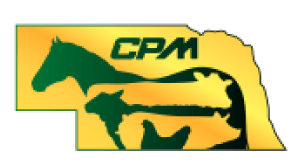With the current price of land and the decreasing availability of pastures, cow-calf producers are starting to look for other options. The traditional rotational grazing of stocks and pastures isn’t as profitable as it once was; since it requires a high capital in order to make it work. Not only is there a 6.3% decrease in grazable acres, but the prices of land and the market risk make it unsuitable for some producers today. The U.S. cow herds must continue to grow in the industry if it is going to preserve and regain lost market share. One way producers can do this is through a confined or semi-confined system.
Moving cows into confinement can increase efficiency, reduce land requirements, and improve herd management. With a confinement system the producer will be able to change the feeding program to suit the nutritional and energy needs of the cow at different stages: breeding, lactating, or gestation. You will also be able to sort the cows based on body condition. Being able to continually adjust the feed intake benefits the animal and the financial outcome by allowing you to wean the calves off early, plus maintain the body condition of the cow. By doing this the cow could cycle more quickly which would make for a faster and easier breed back. However, confinement systems increase labor and management practices in order to see positive impacts. It is recommended to use two different forms of fly control such as, through the feed, back rub, ear tags, fogger, etc. A wet barn is going to cause problems such as disease and performance issues, therefore calves need to be dry bedded frequently. So air flow is not restricted, it is important to never fully close the back wall. The purpose of the barn is not to control temperature but to keep cows dry in the winter and shaded in the summer.
Why would a confinement system work well? Confined or semi-confined units offer opportunity for family expansion and the next generation to return to the farm, as well as gain greater value from forage production. However, when considering a confinement building, the cow-calf systems would be best suited in the hoop barn system, however, not just any hoop barn is going to work. They work best at 40 feet wide, running east and west in length to provide better air flow. The moisture is removed from the facility by ridge ventilation and dual eaves without creating wind chill, so it is important to stress good ventilation. Keep pens dry, clean, and bedded regularly; this will keep your herd calm, comfortable, clean, dry, and healthy all year round. It is also recommended to stray away from the slatted floors that are used for finishing cattle because of the potential dangers the calves would face in the barn. Bedding the floors offer a dry and soft place for the calves to lie.
Deciding to put up a confinement barn takes a lot of researching, planning, and number crunching. If you or someone you know is thinking about putting up a cow-calf confinement building and need a second opinion or more information, don’t hesitate to call a Central Plains Milling representative. We can work closely with you to offer on farm/ranch consulting, ration balancing, ingredient testing, and mineral formulations.
Brady Brester
“The secret of change is to focus all of your energy, not on fighting the old, but on building the new.” – Unknown
Janessa Updike
Sales Nutritionist
(402) 260-9697
janessau@cpmfeed.com
David Claycomb
Sales Rep
(402) 380-1009
davidc@cpmfeed.com
Brady Brester
Sales Rep
(402) 615- 1213
bradyb@cpmfeed.com
Cody Sweeter
Sales Rep
(402) 367- 2840
codys@cpmfeed.com
